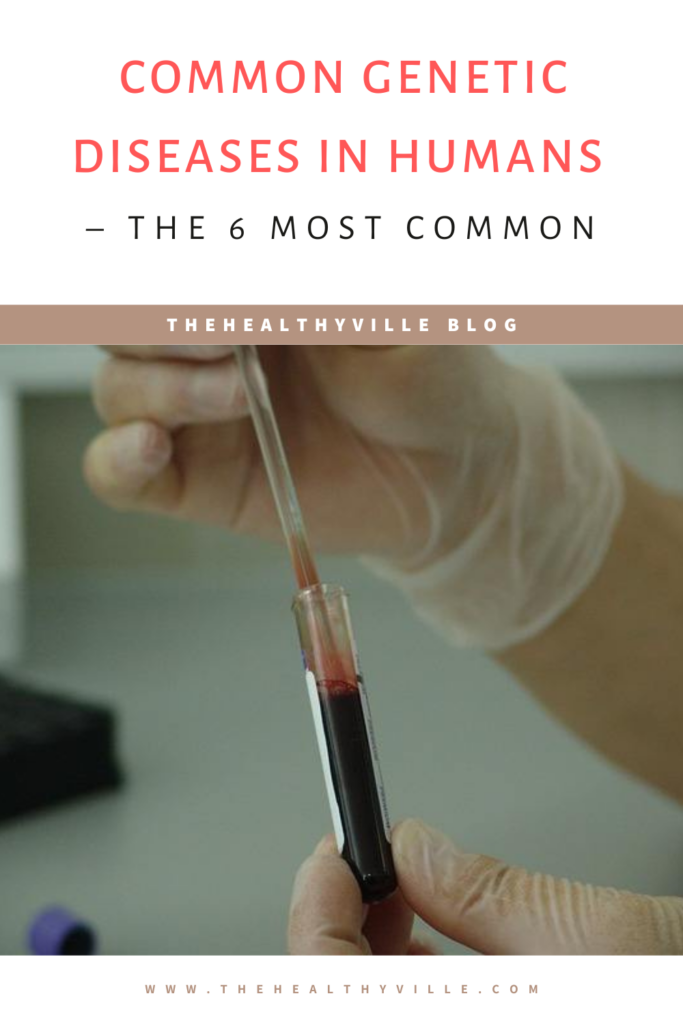Common genetic diseases are those caused by alterations in one or several genes. What are the most common in humans?
The most common genetic disorders or diseases occur when there is an alteration in one or more genes of a person. These disorders can be hereditary (passed from generation to generation) or they can be caused by a mutation during a person’s life.
There are a large number of people who suffer from genetic diseases that have no cure. However, it has been confirmed that detecting them in time is essential to prevent their progress. For this reason, being informed is crucial.
In this article we will mention some of the most common genetic diseases so that you are more attentive.
6 common genetic diseases
Color blindness, one of the most common genetic diseases
Color blindness is one of the most common genetic diseases; so much so, that few people are unaware that it is a genetic disorder. Color blindness consists of a visual disability that prevents distinguishing certain colors.
This disability occurs as a result of a mutation in a recessive gene linked to the X chromosome, so it is a sex-linked inheritance disorder. In this way, all men who inherit the X chromosome with the defective gene have the disorder, while women only have it if both X chromosomes have it.
Down’s Syndrome
The MSD Manual states that “Down syndrome is an abnormality of chromosome 21 that can cause intellectual disability, microcephaly, short stature, and a characteristic face.” Also known as trisomy 21, this is one of the most common and well-known genetic diseases. Likewise, it is the most common cause of congenital psychic cognitive disability.
This disorder occurs when a person has 47 chromosomes instead of the usual 46 in humans. Specifically, an extra copy of chromosome 21 generates. People with this disease usually present physical signs, among which are:
- Heart problems.
- Digestive system problems.
- Decreased muscle tone at birth.
Type I diabetes
Type I diabetes is an autoimmune and metabolic disease characterized by the destruction of the cells of the pancreas responsible for producing insulin. This causes an absolute deficiency in the production of insulin, and, in turn, high levels of sugar (glucose) in the blood.
The exact causes of type I diabetes are unknown. However, experts indicate that the cause could be a combination of factors, including the person’s genetic inheritance. They also indicate that the tendency to develop this disease is transmitted inherited.
Achondroplasia
Achondroplasia is the most common form of dwarfism, which, of course, affects bone growth. In this way, the long bones become symmetrically shorter, while the vertebral column stay at a normal length.
The cause of achondroplasia is a mutation in the FGFR3 gene. This gene involves in the growth control of cartilage cells. When mutated, the proliferation of this type of cells is reduced, which reduces bone growth longitudinally.
Sickle cell anemia
Sickle cell anemia, also known as sickle cell anemia or sickle cell disease, is a blood disorder. This disorder affects hemoglobin, the protein in red blood cells that helps carry oxygen around the body.
It is a genetic disease because it occurs when a person inherits an abnormal gene from each parent. This causes your red blood cells to acquire a sickle shape, thus hindering the transport of oxygen in the blood.
Thalassemia, a group of genetic blood diseases
Thalassemia is the name of a group of genetic blood diseases. In a person with thalassemia, her body produces defective red blood cells due to structural problems with the hemoglobin (oxygen-carrying protein in the blood) that a healthy person.
Among the different types of thalassemias are: alpha-thalassemia, beta-thalassemia, Cooley’s anemia and Mediterranean anemia.
Generally, a thalassemia leads to anemia, because the hemoglobin does not perform its function correctly. It causes symptoms such as:
- Fatigue.
- Bone pain.
- Lack of appetite.
- Liver dysfunction.
- Congestion in the spleen.
- Difficulty breathing.
- Propensity to break bones.
- Jaundice: yellow discoloration of the skin, eyes, and mucous membranes.
If you suspect that you may have any pathology, we recommend that you consult your medical team as soon as possible. They will assess your case and determine which are the most useful complementary tests for each patient.
It is important that you know your family history, since most diseases are hereditary and when taking the anamnesis it is important to tell the doctor.
Don’t forget to SHARE the 6 most common genetic diseases with your friends and family on your social networks!

